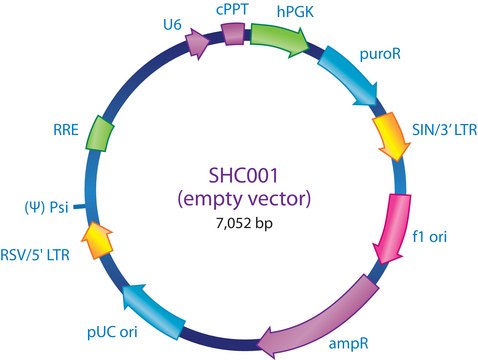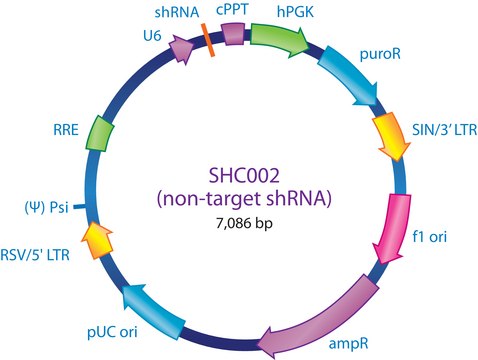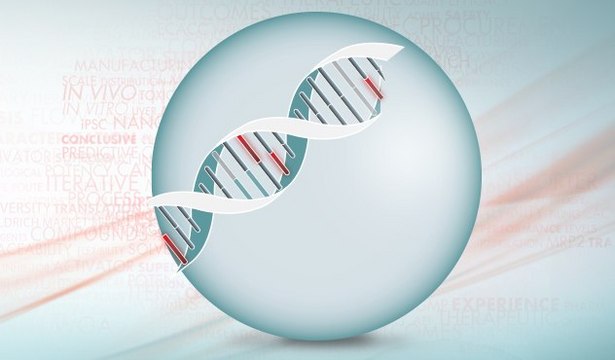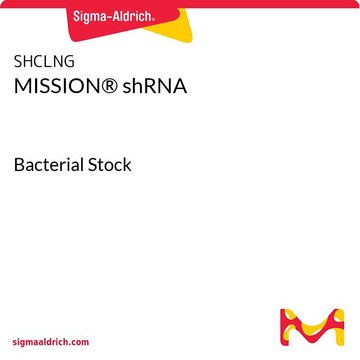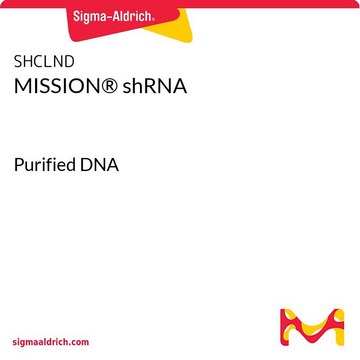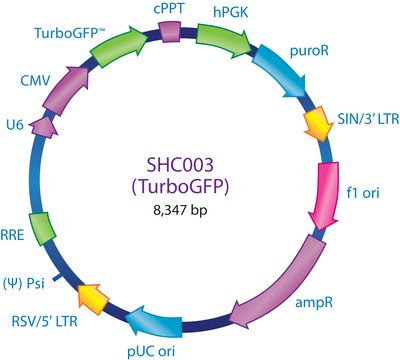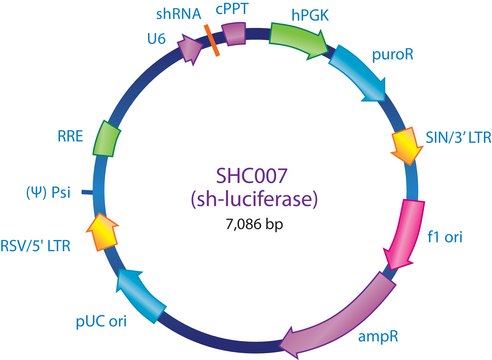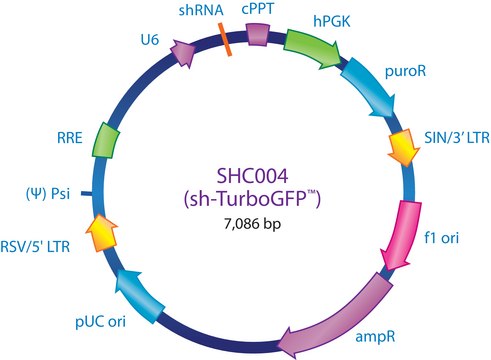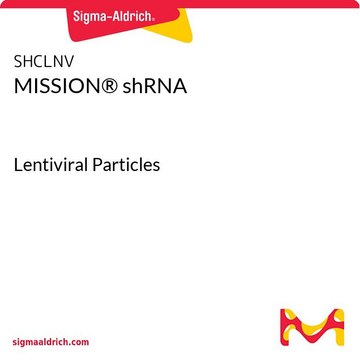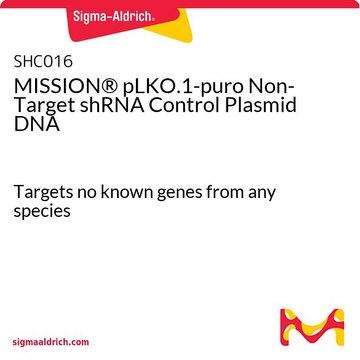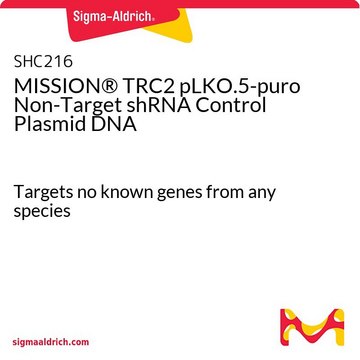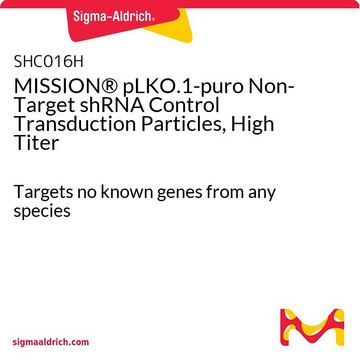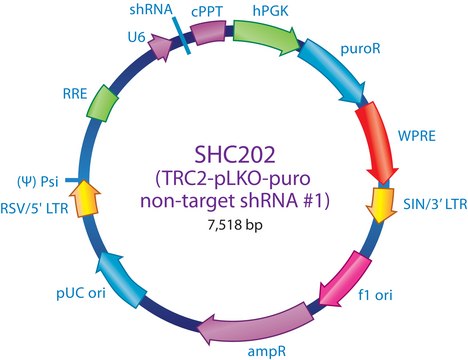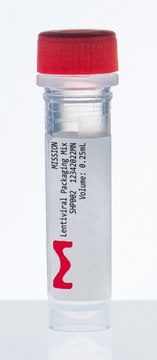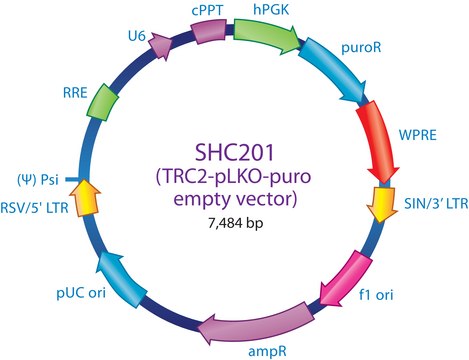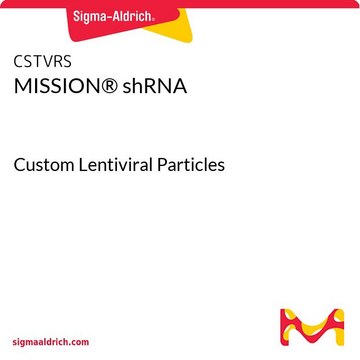SHC016
MISSION® pLKO.1-puro Non-Target shRNA Control Plasmid DNA
Targets no known genes from any species
Synonym(s):
MISSION® Control Vectors, negative control, negative shRNA control, non-target control, non-target shRNA, non-target shRNA control, shRNA control
About This Item
Recommended Products
Quality Level
product line
MISSION®
concentration
500 ng/μL in TE buffer; DNA (10μg of plasmid DNA)
shipped in
dry ice
storage temp.
−20°C
Looking for similar products? Visit Product Comparison Guide
Related Categories
1 of 4
This Item | SHC216 | SHC001 | SHC016H |
|---|---|---|---|
| concentration 500 ng/μL in TE buffer; DNA (10μg of plasmid DNA) | concentration 500 ng/μL in TE buffer; DNA (10μg of plasmid DNA) | concentration 500 ng/μL in TE buffer; DNA (10μg of plasmid DNA) | concentration ≥1x109 VP/ml (via p24 assay) |
| product line MISSION® | product line MISSION® | product line MISSION® | product line MISSION® |
| shipped in dry ice | shipped in dry ice | shipped in dry ice | shipped in dry ice |
| storage temp. −20°C | storage temp. −20°C | storage temp. −20°C | storage temp. −70°C |
| Quality Level 200 | Quality Level 200 | Quality Level 200 | Quality Level 200 |
General description
Application
- in tumor cells for multicolour imaging[1]
- in human adult low calcium temperature keratinocytes[2]
- in mouse embryonic fibroblasts, to study the biological functions of IP6K1 (inositol hexakisphosphate kinase)[3]
- to study the function of Zac1 (zinc finger protein regulating apoptosis and cell cycle arrest) expression in astroglial differentiation[4]
Legal Information
recommended
Storage Class
10 - Combustible liquids
wgk_germany
WGK 2
flash_point_f
Not applicable
flash_point_c
Not applicable
Choose from one of the most recent versions:
Certificates of Analysis (COA)
It looks like we've run into a problem, but you can still download Certificates of Analysis from our Documents section.
If you need assistance, please contact Customer Support
Already Own This Product?
Find documentation for the products that you have recently purchased in the Document Library.
Customers Also Viewed
Our team of scientists has experience in all areas of research including Life Science, Material Science, Chemical Synthesis, Chromatography, Analytical and many others.
Contact Technical Service